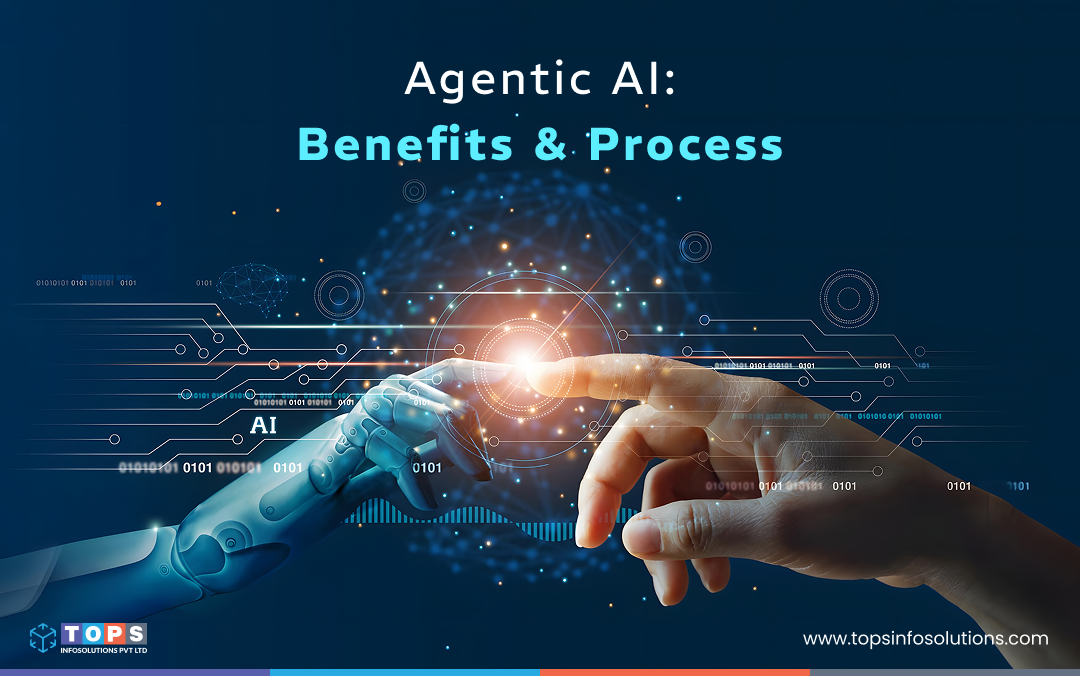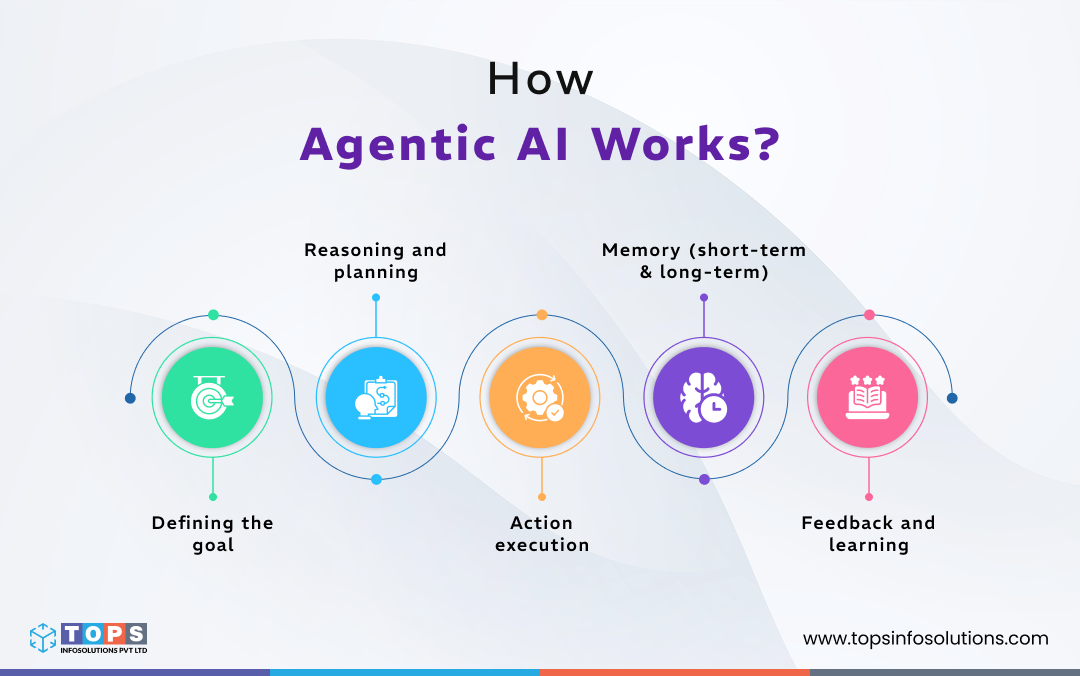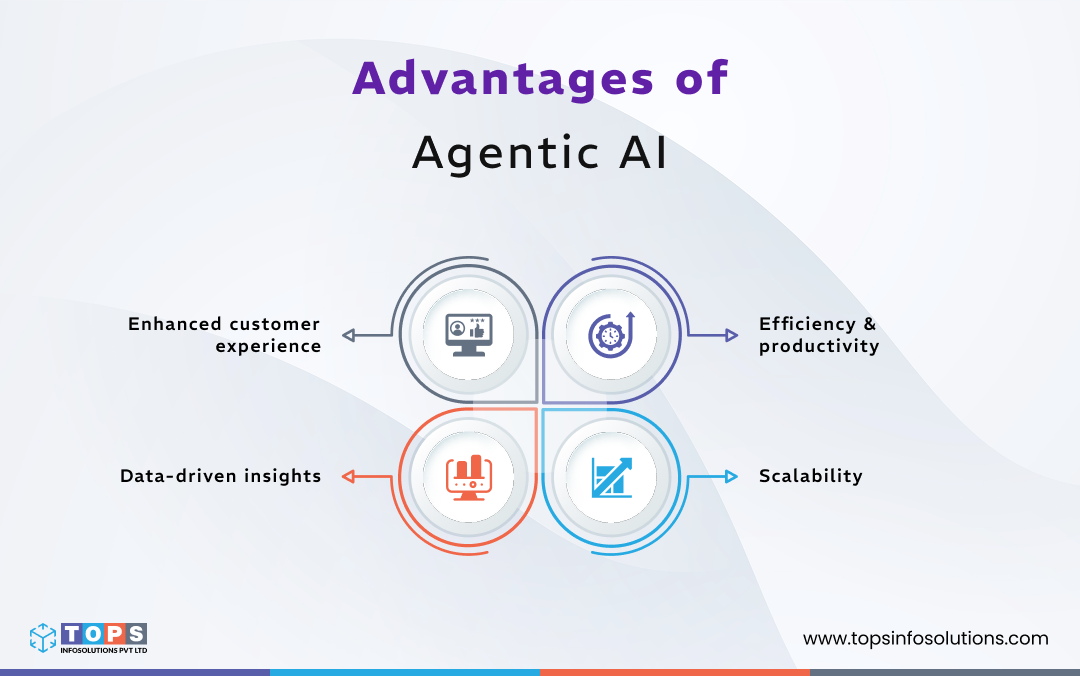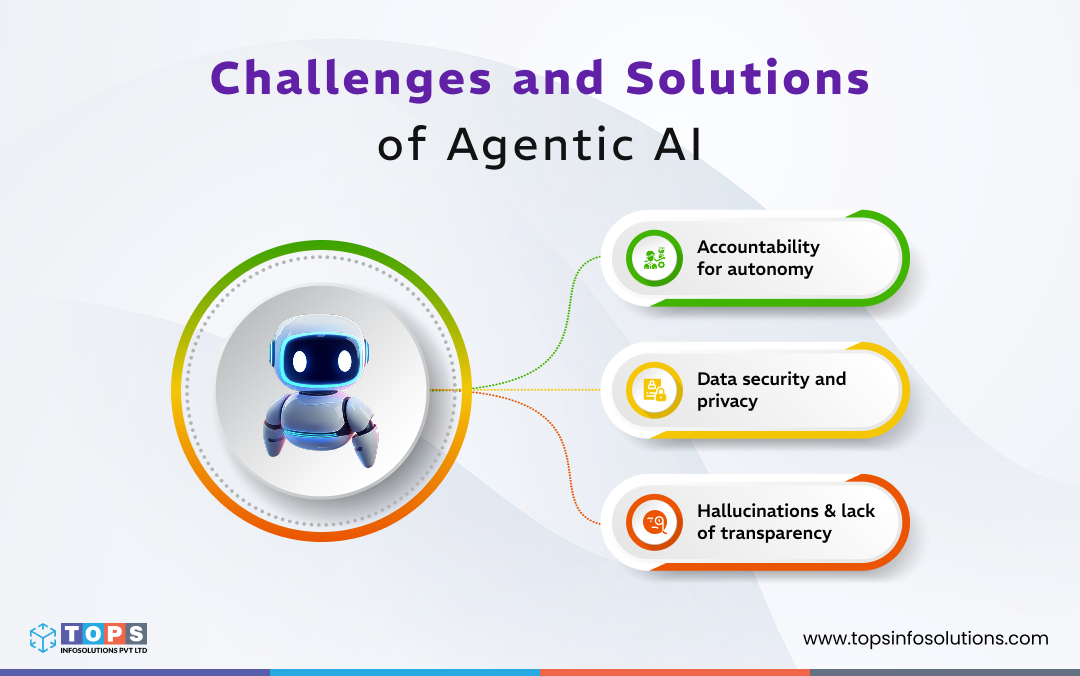Table of Contents
Agentic AI: How It Works, Benefits, Comparison With Traditional AI

Just when it felt like you were catching up with the AI revolution, a new buzzword has entered the spotlight — Agentic AI.
Recent studies reveal that 79% of senior executives are already using Agentic AI services in their processes, and 66% report measurable value through higher productivity and efficiency.
But amid the hype, there’s still confusion. What exactly is Agentic AI? How does it work? What technologies power it, and how does it differ from the AI we’re already familiar with?
In this article, we’ll explore the answers and understand why it’s being hailed as the next big leap in intelligent automation.
What is Agentic AI?
Agentic AI refers to artificial intelligence systems that act autonomously towards executing a goal. It’s powered by AI agents that mimic human decision-making to analyze situations and solve problems in real time.
While traditional AI relies on human guidance and input for every decision, agentic AI uses advanced deep learning algorithms and decision-making frameworks to provide solutions to dynamic queries.
AI agents can operate independently or as part of a multi-agent system. In a single-agent setup, one agent handles the full workflow, whereas in a multi-agent setup, multiple agents collaborate, with each specializing in different parts of the process.
To better understand how it works, let’s check out the agentic AI workflow with an example:
How Agentic AI Works?
AI agents follow a process through which they arrive at user queries. Let’s take a closer look at this process in detail:

1. Defining the goal
You first start by identifying what you want the AI agents to do. Is it to conduct research for your next project? Is it to gather the documentation for it? Or both?
For example, let’s say you’re a real estate firm and your goal for deploying an AI agent is to “analyze the latest New York property market trends and create a report highlighting price shifts, demand hotspots, and investment opportunities.”
2. Reasoning and planning
Once the goal is set, the AI agent gets to work and reasons about the best way to approach the task. It breaks down into smaller steps and organizes them in the right sequence, such as
- Gather property price data from reliable sources
- Pull market reports and news articles
- Compare prices across neighborhoods
- Identify demand patterns
- Compile findings into a structured summary
3. Action execution
This is where agentic AI services stand out. Instead of just providing an outline or generating text, it can actually take action. It performs the task by connecting with APIs, databases, or tools.
In our example, the AI agent uses APIs to fetch property listings and pricing information. It queries real estate databases for historical pricing and browses new sources for market updates. Finally, it runs calculations for rental yield, trend shifts, and average prices.
4. Memory (short-term & long-term)
Agentic AI can track progress and learn from past work. Short-term memory helps manage steps in the current task, while long-term memory builds knowledge over time for smarter results.
- Short-term: While analyzing New York data, the agent recalls that it has already processed the Manhattan prices, so it moves on to the next neighborhood without repeating steps.
- Long-term: It recalls insights from a previous report on the San Francisco real estate market made a few weeks ago, and uses that structure as a template for the New York report.
5. Feedback and learning
Agentic AI doesn’t stop at delivering an output. It evaluates whether the result matches the original goal. They train and tweak the system to improve its functioning. For example, if the AI is trained, it can notice that rental trends for Queens are missing. It goes back, fetches the missing data, and updates the report.
Supporting Technologies of Agentic AI
Just like generative AI services, agentic AI is also powered by LLMs, which act as the brain of the technology. But apart from that, it also includes a bunch of other technologies that enable AI to act autonomously and recall conversations.
LLMs
AI agents get their reasoning ability, natural language processing, and decision-making power from Large language Models like GPT-4, Claude, Llama, and Gemini. Imagine how our brain processes goals and defines a roadmap on how to act on them. In the same way, LLMs help the agent understand tasks, break them down, and generate logical next steps.
Frameworks
Frameworks make it possible for AI agents to execute tasks and interact with the world. Tools like LangChain, LlamaIndex, and CrewAI connect LLMs with external tools, APIs, and databases.
Memory systems
Memory systems enable agents to stay on track and get smarter over time. Vector databases like Pinecone and Milvus store and retrieve information based on semantic meaning rather than just keywords. Additionally, knowledge graphs help capture relationships between entities to enable deeper reasoning.
Agentic AI vs Traditional AI
With all the new developments, I’m sure you must be wondering: What exactly is new or different about agentic AI? The difference between the traditional AI and agentic AI doesn’t just lie in intelligence but in autonomy and action. Besides, they also function differently. Let’s take a look at these differences in detail:
Traditional AI
Traditional AI significantly serves businesses with simple operations. But it operates with certain limitations. Since it is rule-based and narrowly trained for specific tasks, they are only active when prompted, predicts outcomes, classifies data, or generates responses, only within the boundaries of what it has been trained on.
While traditional AI is limited in functionality, it works perfectly for workflows that are repetitive and well-defined. For example, it can help with single-step predictions or classifications, like predicting property prices based on location and features. It can also take over tasks with limited variability where inputs and outputs are stable and predictable.
Agentic AI
Agentic AI represents a shift from passive intelligence to active intelligence. Instead of producing outputs. It can reason, plan, and execute multi-step tasks. It integrates with external tools, APIs, and databases to act on information, not just analyze it.
These work best when we’re dealing with complex goal-oriented workflows and multi-step decision-making. It also works best for dynamic environments that require continuous adaptation.
A major advantage of agentic AI over traditional AI is that the former is more autonomous, adaptable, and valuable for organizations aiming to scale intelligent automation. Traditional AI lacks the flexibility, memory, and ability to take real-world actions.
| Aspect | Traditional AI | Agentic AI |
|---|---|---|
| Approach | Rule-based | Goal-driven and reasoning |
| Capability | Provides output when prompted | Plans, executes, and self-corrects |
| Flexibility | Limited to predefined functions | Can adapt to a new context |
| Action | Restricted to analysis or response generation | Can call APIs, query databases, browse the web, and trigger workflows |
| Memory | Minimal, session-bound | Short-term + long-term memory for learning and context |
| Human involvement | Requires continuous oversight | Reduces manual intervention with autonomy |
Benefits of Agentic AI
Agentic AI takes a step further within the AI revolution and redefines the way we get our tasks done. Here are some apparent benefits of agentic AI for businesses:

1. Efficiency & productivity
Agentic AI goes far beyond simple assistance. It can automate entire workflows, taking over research, execution, and reporting, so teams are freed from repetitive tasks. The result: higher productivity, faster outcomes, and more time for people to focus on strategic, high-value decisions.
2. Scalability
Applications of agentic AI span across various industries and use cases. Its strength lies in combining the flexibility of large language models with the reliability of traditional programming.
LLMs handle tasks that require reasoning, creativity, and adaptability, while traditional programming enforces strict rules, logic, and performance standards. Together, this hybrid approach makes Agentic AI both scalable and precise.
3. Data-driven insights
A key benefit of agentic AI is its ability to process and assess large amounts of data. This data is sourced from credible sources, including RAG (retrieval-augmented generation) and other internal documents, to provide accurate responses.
Agentic AI can gather, analyze, and learn from data, enabling your enterprise to predict trends, identify challenges, and capitalize on new opportunities. This ensures AI doesn’t hallucinate and allows users to make data-informed decisions.
4. Enhanced customer experience
Customers expect quick support and instant gratification, and agentic AI allows businesses to meet these benchmarks by responding in real-time. It can customize outputs to specific requirements and adapt to changing situations with minimal human intervention.
It also allows systems to predict intent and maintain consistency in communication so that each interaction is more focused, thereby providing an enriching customer experience.
Challenges and Solutions
With the high degree of autonomy that agentic AI provides, it suffices to say that it comes with its challenges. It raises questions around ethics, accuracy, privacy, and compliance. Let’s take a closer look at the challenges of agentic AI in detail:

Accountability for autonomy
With agentic AI, we’re dealing with a level of autonomy unlike any previous technology, making it challenging to define clear boundaries on how much decision-making should be entrusted to agents. For instance, agentic AI in healthcare can suggest treatment options, but if not carefully managed, its recommendations could have serious consequences.
Additionally, it becomes hard to hold anyone accountable when this happens. Do you blame the AI developer or the hospital that deployed the solution, or the AI itself? Since we’re still at a nascent stage, it is difficult to navigate the complexities of unexpected situations.
What to do?
Only automate tasks with low stakes. And even then, continuous monitoring ensures that AI agents operate within predefined parameters. Ensure that it operates within compliance and ethical standards. Doing so can flag anomalies and enable swift intervention when necessary.
Data security and privacy
Another big concern over AI use is the exposure of sensitive data and privacy issues. There is a high possibility that the data AI operates with can be misused to get unauthorized access to private information. Not to forget, agentic AI services rely on connecting with APIs, databases, and sensitive systems, leading to a higher risk of data leaks.
What to do?
First things first, enforce role-based access control. Encrypt data exchanges and set clear compliance rules like GDPR and HIPAA after deploying AI agent workflows.
Hallucinations and lack of transparency
A lot of people who interact with AI agents simply take its word for it. Let’s assume most of the time, the agent sourced that information from credible sources. But what about that one time that it didn’t?
This misinformation is even more dangerous, especially if the query has high stakes. The lack of transparency makes trusting AI responses difficult. Without the right training, AI agents can also come up with their own interpretations (“hallucinations”) that aren’t accurate.
What to do?
Enable transparency in the AI agent workflow that shows where the data was sourced from. This builds trust and makes the agents more reliable. Finally, establish human-in-the-loop checkpoints for high-stakes tasks. Use grounding techniques like RAG to reduce hallucinations.
Wrapping up
Agentic AI is a major shift in how organizations approach automation. Powered by a bunch of technologies, it takes ownership of goals and behaves less like a tool and more like a digital teammate. Yes, it comes with its challenges, but with the right approach to tackle them, you can achieve new heights of automation and efficiency.
At TOPS, we help businesses design, implement, and scale Agentic AI solutions tailored to their industry. Regardless of your industry, our expertise ensures that you get secure, reliable, and ROI-driven results from day one. Connect with us to know more.

